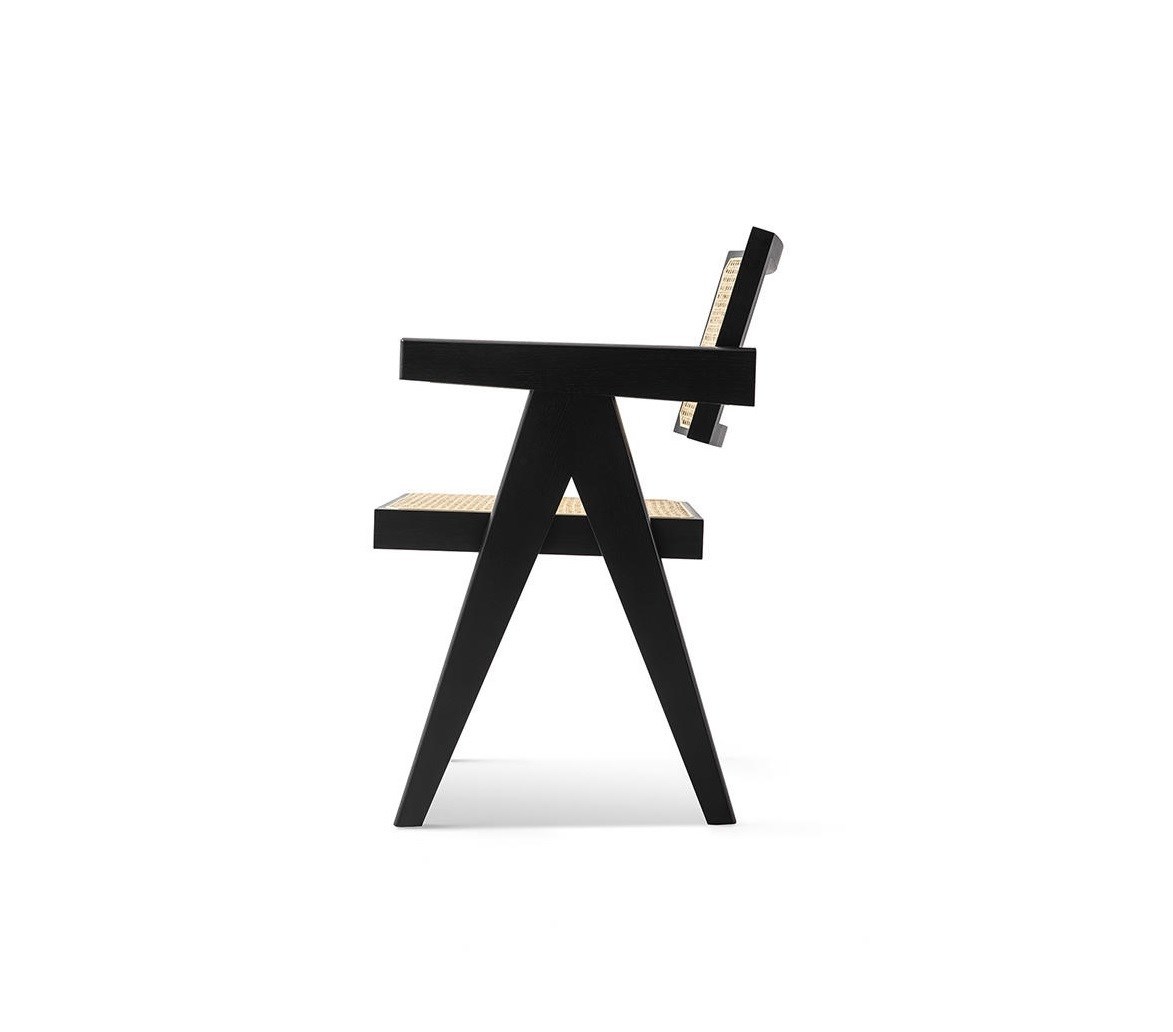Capitol Complex Armchair
- Designer:
- Pierre Jeanneret
- Brand:
- Cassina
Easter Hours - All showrooms are closed on public holidays. Auckland showroom open Saturday as usual. Click here for Easter Hours
We don't appear to have any products related to your search term. Please try again.
Shipping and discount codes are added at checkout.







This chair is one of the most recognisable in Chandigarh’s Capitol Complex, found throughout the offices of the Secretariat. The independent pieces, including the side bars in an inverted “V” supporting the armrests, are all made of solid wood. The woven backrest and seat, stretched across a wooden frame, are elements common in the area, much like the use of local woods like teak. Similar to the better-known office chair, this armless chair also uses the “V” approach to sidebars, in this case shorter as they do not extend to the arms. Importance, instead, is given to the seating/ backrest sequence in Viennese woven cane, connected with an immense geometric section supported by two wooden profiles, and coplanar legs, that together, are simple and yet, powerful at the same time. Cassina’s reissue offers the classic version in teak, and two versions in natural and stained black oak.
This chair is one of the most recognisable in Chandigarh’s Capitol Complex, found throughout the offices of the Secretariat. The independent pieces, including the side bars in an inverted “V” supporting the armrests, are all made of solid wood. The woven backrest and seat, stretched across a wooden frame, are elements common in the area, much like the use of local woods like teak. Similar to the better-known office chair, this armless chair also uses the “V” approach to sidebars, in this case shorter as they do not extend to the arms. Importance, instead, is given to the seating/ backrest sequence in Viennese woven cane, connected with an immense geometric section supported by two wooden profiles, and coplanar legs, that together, are simple and yet, powerful at the same time. Cassina’s reissue offers the classic version in teak, and two versions in natural and stained black oak.
Designer
Pierre Jeanneret studied architecture in Geneva before joining the firm of his cousin, Charles Edouard Jeanneret, better known by his sobriquet Le Corbusier.

